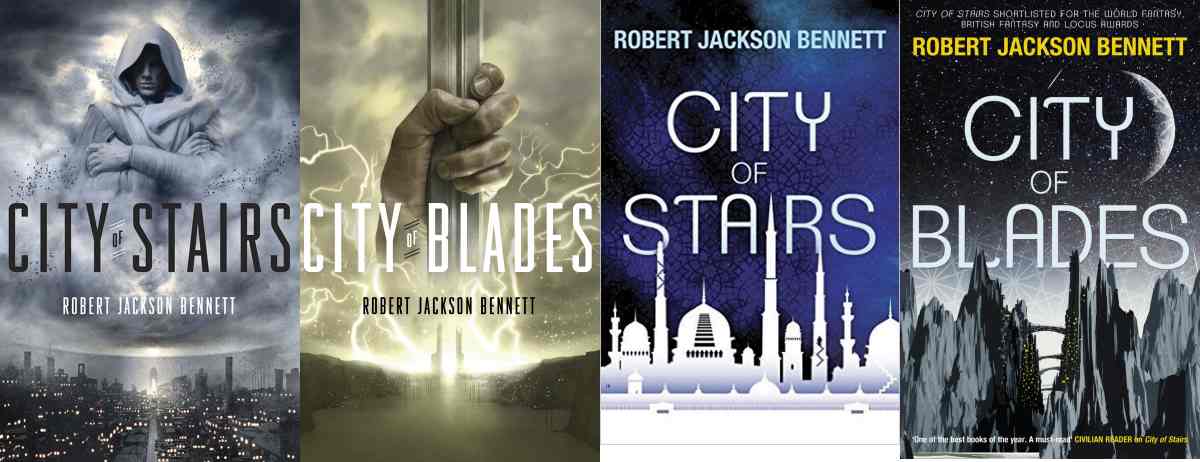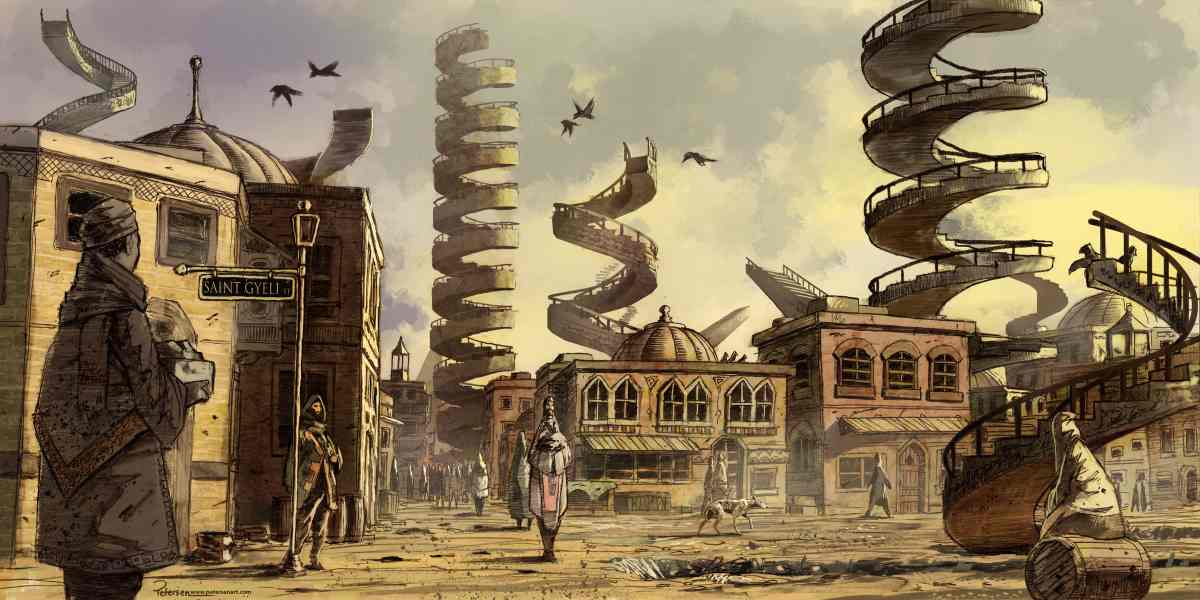 Robert Jackson Bennett’s first Divine City novel, City of Stairs, took me a little while to work my way into. I am happy to confess this is because I’m a little stuck in my ways. I like traditional epic heroic fantasy, probably because that’s what I grew up with. It’s my comfort food.
Robert Jackson Bennett’s first Divine City novel, City of Stairs, took me a little while to work my way into. I am happy to confess this is because I’m a little stuck in my ways. I like traditional epic heroic fantasy, probably because that’s what I grew up with. It’s my comfort food.
Reading City of Stairs was like my first experience in an Indian restaurant. My teenage self, up until that point had had a culturally sheltered, white middle-class upbringing. A group of us were taken deep into the city of Birmingham (UK), near where I grew up, for a curry. I had no idea what to expect.
I tentatively poked at my food, wondering whether it was safe to eat, before placing the hot, pungent, and slightly sour, meat-in-brown-sauce into my mouth. More dishes came; The famous Birmingham Balti, Sheek-Kebab, some onion in hot red sauce, the like of which I’ve never found since. The taste sensations that exploded in my head, where incredible and began a love affair with Indian food that is nearly in its thirtieth year.
My relationship with Jackson Bennett’s books is only fledgling in comparison but I am equally happy to gorge myself on the spicy, other-worldliness of his novels. At its heart, City of Stairs is a murder mystery, but what sets it apart is its setting. Part China Mieville, part Alif the Unseen, its an arabesque tale set in a secondary world. It’s a novel filled with allegory and allusion. It’s a modern day The Master and Margarita for the War on Terror generation.
The Divine Cities novels are about seeing things from the other person’s point of view. The books are set in a secondary fantasy world but Jackson Bennett subverts traditional genre ideas, particularly those of race and gender (i.e. he doesn’t view everything from the perspective of white males). Doing so allows him to wipe the slate clean, erasing his readers’ preconceptions, before building something else equally magical. I think it’s the reforging process that makes the novel a slightly bumpy read. There’s a lot of information to process. Nothing is certain; everything is new and open to interpretation. There’s work to be done by the reader and that’s tiring, but then I found reading Bulgakov hard work too.
City of Stairs takes place in a world where gods once roamed the earth, only now they have gone, destroyed by a godless race they once held in thrall. It’s an intriguing platform on which to build a novel. How does a world used to dealing with deities and their miracles continue in the aftermath of their destruction?
The novel examines the perils of accepting religious dogma as truth, but also the importance of attempting to understand why a group believe the things they believe. With layers of story built up over centuries, and the mixed agendas held by those writing those stories, the true intention of a religious practice may have been lost. City of Stairs stresses how vital it is to understand those who are different to us. Knowledge may be power, but it can also be used to set us free. The real-world parallels are abundant.

I hadn’t necessarily expected a follow up to City of Stairs, but I was thrilled to find that there was one. Unlike its predecessor, I had no difficulties finding my way into City of Blades. Again, at the story’s heart is a criminal investigation. This time, missing persons. Once again, the nature of religion is the novel’s overriding theme.
City of Blades takes place several years after City of Stairs, in a completely new location, but one that is as vividly unusual as the setting of the first book. Some characters from the first book appear in the sequel, but not all of them. Time and politics have moved on.
I’m not sure whether it was because I had already tuned into the author’s world-building but I found the second book much easier going than the first. The story is excellent and the characters beguiling. There’s all manner of things going on here, and the plot is neat and elegant. The narrative concerns the mysterious City of Blades, an afterlife for those who worship the Death Goddess, but as the Gods and their works were destroyed decades ago, can it really exist?
The Divine Cities series makes for an invigorating read, one that rewarded the effort needed to find my way into the first book. There is one more book in the pipeline, City of Miracles, a book which on the strength of Stairs and Blades, I am very much looking forward to reading. If you haven’t read any of Robert Jackson Bennett’s particularly flavor of fantasy, I can wholeheartedly recommend you do. Roast chicken and vegetables are always tasty, but few things excite the palette like an expertly prepared curry.
The Divine Cities series are published by Broadway Books in the US and Jo Fletcher Books in the UK. More of John Petersen’s artwork can be found here. Many Thanks to Jo Fletcher Books for sending me review copies of these two books. Robert Jackson Bennett tweets entertainingly at @robertjbennett


